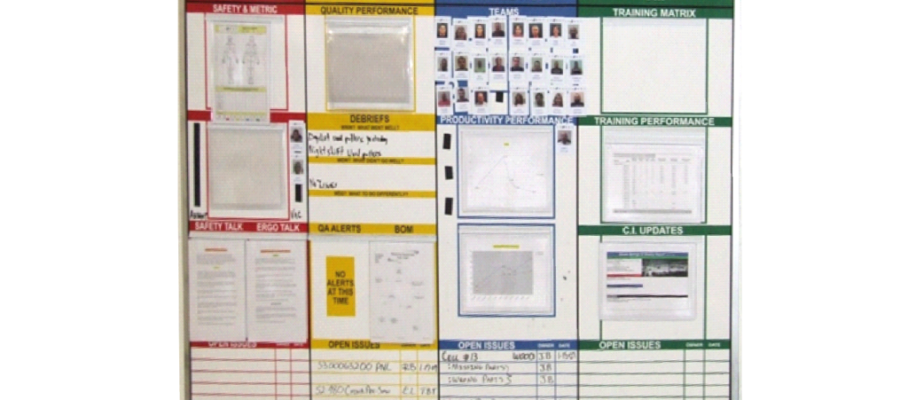Apr 14 2012
From bitter to sweet
Via Scoop.it – lean manufacturing
A Honeywell plant in Lincolnshire, Illinois,, went from being one of the most messed up to one of the best. ….The Economist
Via www.economist.com
Apr 14 2012
Via Scoop.it – lean manufacturing
A Honeywell plant in Lincolnshire, Illinois,, went from being one of the most messed up to one of the best. ….The Economist
Via www.economist.com
By Michel Baudin • Press clippings 0 • Tags: Lean manufacturing
Apr 13 2012
Via Scoop.it – lean manufacturing
An important topic, but the five skills in the article don’t match what I have seen in factories. Requiring supervisors to know how to do every job is tentamount to restricting that position to people who have come up from the ranks of operators. Many effective supervisors do have this background, but it takes them so long to become supervisors that it is usually as far as they go. In many companies, you also encounter supervisors who are recent college grads with an engineering degree and sometimes an MBA, who then move on to other jobs. They obviously can’t know the details of every operation, but can be effective if they have team leaders who do.
In knowledge of responsibilities, the article mentions codes and union contracts, but omits the execution of the production plan. In ability to Kaizen, I would broaden this to the ability to lead improvement projects, and the background required for this goes beyond 5S and problem-solving to include line design concepts and some understanding of SMED, cells, heijunka, kanbans, etc.
Yes, supervisors should know how to lead and to teach, but, in a Lean environment, they are also responsible for helping operators through career planning, which means organizing job rotations and training to develop skills towards their individual goals, and providing regular feedback.
Via www.smartbrief.com
By Michel Baudin • Press clippings 0 • Tags: Lean, Lean manufacturing, Management
Apr 10 2012
Via Scoop.it – lean manufacturing
This article asserts the opposite. According to it, “Lean principles are based on Western ideas and methods.” I never thought Japan was part of the West. And Lean is supposed to be incompatible with “the teachings of Confucius,” that are at least as influential in Japan as in China. According to the author, China has been confucianist for 3,000 years, which puts it at 1,000 BCE. It is interesting, considering that Confucius wasn’t born for another 500 years. It is like making Steve Jobs a contemporary of da Vinci.
It might have occurred to the author that there might be more immediate reasons for her problems implementing Lean in the Pearl River Delta. For one, a labor structure that is similar to that of the maquiladoras of the US-Mexico border: girls from the hinterland coming to work in factories for a year or two. For another, in management, the lingering influence of Maoism.
All the factories in the world draw their work forces from societies with their own cultural idiosyncrasies. This is equally true in the US, France, Russia, or China. However, once on the shop floor, dealing with machines and production lines, the national culture is little more than background noise. You have to pay attention to the local etiquette, but that is not a show stopper.
Via www.scmr.com
By Michel Baudin • Press clippings 5 • Tags: Lean, Management
Apr 7 2012
My previous post on this subject listed some requirements on metrics to be useful on the shop floor. Here, we take it one level further, first by establishing that shop floor metrics should be in the language of things rather than the language of money, and then by using the requirements to evaluate examples of quality metrics. In later posts, I will do the same for other dimensions of manufacturing performance.
By Michel Baudin • Metrics 5 • Tags: KPI, Lean, Management, Metrics

Mar 31 2012
Ever since childhood, we all want to know what grades we get on our report cards, and what these grades mean in terms of how well we are doing. We want to be evaluated based on parameters we understand and we can affect by our efforts.
A key issue in manufacturing is consistency as we go from a shop to a department to an entire plant and to the company as a whole. We don’t want to use parameters in terms of which excellent local performance can aggregate to poor global performance. Once performance measures are selected, the next challenge is to use them as a basis for management decisions that are in the best interest of the company while being fair and nonthreatening to employees. In particular, actions taken to improve one aspect of performance must not degrade another. In addition to these issues, in a lean environment, we need to consider the impact of improvement projects, before and after they are carried out.
By Michel Baudin • Metrics 4 • Tags: KPI, Lean, Management, Metrics
Apr 15 2012
Metrics in Lean – Part 3 – Equipment
The aggregate metric for equipment most often mentioned in the Lean literature is Overall Equipment Effectiveness (OEE). I first encountered it 15 years ago, when a client’s intern who had been slated to help on a project I was coaching, was instead commandeered to spend the summer calculating the OEEs of machine tools. I argued that the project was a better opportunity than just taking measurements, both for the improvements at stake for the client and for the intern’s learning experience, but I lost. Looking closer at the OEE itself, I felt that it was difficult to calculate accurately, analyze, and act on. In other words, it does not meet the requirements listed in Part 1.
Share this:
Like this:
By Michel Baudin • Metrics 15 • Tags: KPI, Lean, Management, Metrics